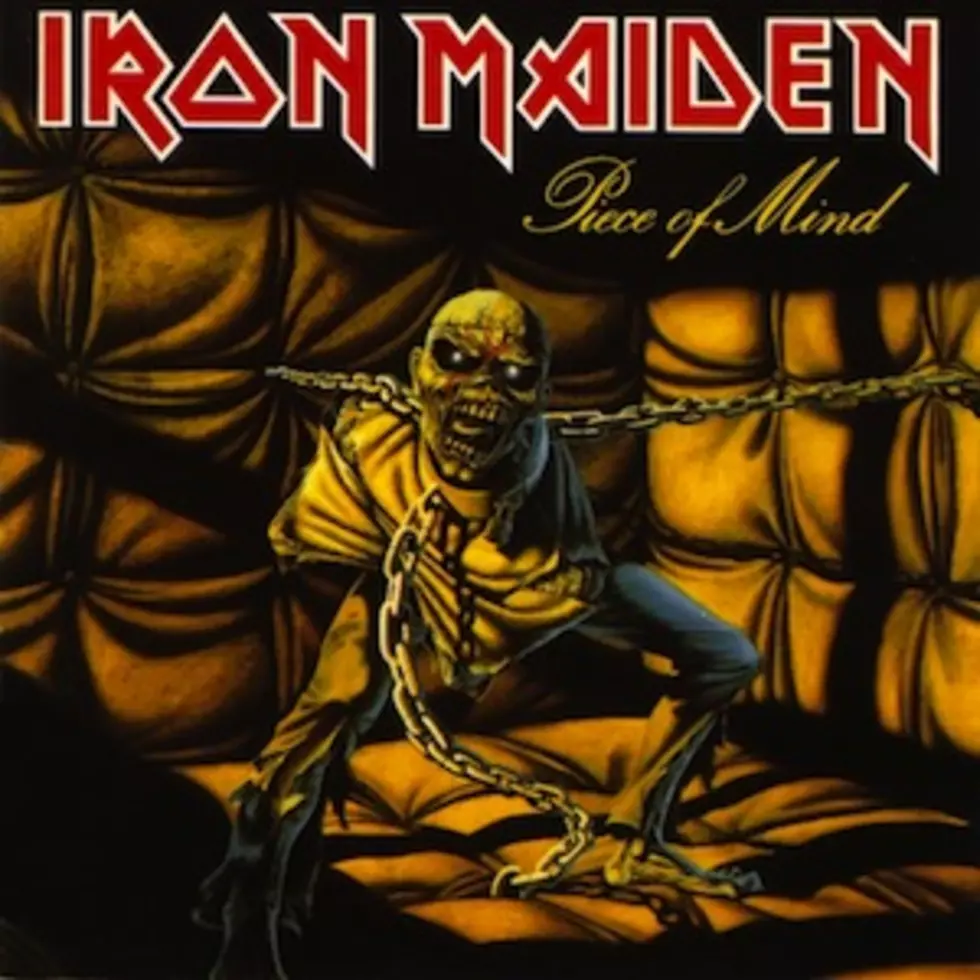
32 Years Ago: Iron Maiden Release ‘Piece of Mind’
On May 16, 1983, Iron Maiden’s lovable mascot, Eddie, lost his mind (not to mention his grizzled mane) and heavy metal fans across the globe lost theirs over one of the most beloved heavy metal albums of all time -- Piece of Mind. In fact, for many American fans in particular, Maiden's fourth studio album remains a sentimental favorite, being the first piece of new product they experienced after learning about the group during their tour in support of 1982's watershed The Number of the Beast LP.
For the members of Iron Maiden, Piece of Mind was instead a pretty pivotal, pressure-packed album, coming as it did on the heels of such a well-received predecessor (though members of the clergy may beg to differ), yet another lineup re-shuffling (a curious obstacle shared by every Maiden album until then) and the everyday uncertainties associated with rock and roll careers.
All of which pays high praise to the remarkable consistency with which the British quintet set about, methodically writing heavy metal history as they grew from strength-to-strength throughout the first half of the '80s.
As usual, it was band leader and bassist Steve Harris who led the creative charge behind ‘Piece of Mind,’ single-handedly crafting its rousing, semi-speed-metal opener, "Where Eagles Dare," its majestic closing epic, "To Tame a Land" (based on Frank Herbert's Dune novels), its relentlessly galloping centerpiece, "The Trooper," and the comparatively modest "Quest for Fire."
Luckily Harris was now able to count on more significant help with these songwriting chores, thanks to the steadily increasing contributions of guitarist Adrian Smith and the emergence of vocalist Bruce Dickinson, who had joined too late to add his ideas to Beast. Smith and Dickinson penned Piece of Mind's breakout single, "Flight of Icarus," a serviceable album cut in "Sun and Steel," and also collaborated with Harris on the clever, future live favorite, "Die With Your Boots On," while Dickinson showed what he was capable of on the multi-faceted "Revelations."
Founding guitarist Dave Murray pitched in by co-writing the interestingly nuanced, lyrically inspired "Still Life" with Harris – complete with faux-Satanic backward messages for an intro, designed to freak out all those who wanted to freak out over such things.
Finally, Piece of Mind signaled the arrival of new drummer Nicko McBrain, who not only filled the rather large shoes left by the much-loved Clive Burr with greater technical proficiency (in place of the Burr’s celebrated "feel"), but did so without sacrificing his personal, virtually unique, jazz-tight drum sound, which several critics of the time actually deemed "not forceful enough" for metal.
Indeed, no one could have known at the time, but Iron Maiden had at last secured the "classic" lineup that would remain unchanged (including the vital support team of strong-armed managers Rod Smallwood and Andy Taylor, producer extraordinaire Martin Birch and even faithful cover illustrator, Derek Riggs, among others) for their decisive, glorious push towards universal recognition over the next five years.
And to think it all began with the simple decision to lobotomize their mascot.
See Iron Maiden and Other Rockers in the Top 100 Albums of the '80s
The 10 Worst Rock and Roll Hall of Fame Snubs
More From 1073 Popcrush










